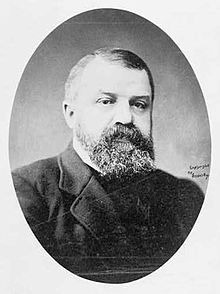

| Timeline of music in the United States | |
|---|---|
| Music history of the United States | |
| Colonial era – to the Civil War – During the Civil War – Late 19th century – 1900–1940 – 1950s – 1960s – 1970s – 1980s | |
This timeline of music in the United States covers the period from 1850to1879. It encompasses the California Gold Rush, the Civil War and Reconstruction, and touches on topics related to the intersections of music and law, commerce and industry, religion, race, ethnicity, politics, gender, education, historiography and academics. Subjects include folk, popular, [[|musical theater|theatrical]] and classical music, as well as Anglo-American, African American, Native American, Irish American, Arab American, Catholic, Swedish American, Shaker and Chinese American music.
| Early 1850s music trends |
|---|
|


| Mid 1850s music trends |
|---|
|

| Late 1850s music trends |
|---|
|
| Early 1860s music trends |
|---|
|


| Mid 1860s music trends |
|---|
|
| Late 1860s music trends |
|---|
|


| Early 1870s music trends |
|---|
|

| Mid 1870s music trends |
|---|
|

| Late 1870s music trends |
|---|
|
{{cite book}}: Unknown parameter |middle= ignored (help){{cite journal}}: Unknown parameter |month= ignored (help){{cite journal}}: Unknown parameter |month= ignored (help){{cite book}}: |first= has generic name (help){{cite book}}: Unknown parameter |coauthors= ignored (|author= suggested) (help){{cite journal}}: |format= requires |url= (help); Cite journal requires |journal= (help){{cite book}}: |editor= has generic name (help)CS1 maint: multiple names: editors list (link){{cite journal}}: |format= requires |url= (help); Cite journal requires |journal= (help){{cite web}}: Check date values in: |accessdate= (help); Unknown parameter |accessyear= ignored (|access-date= suggested) (help){{cite web}}: Check date values in: |accessdate= (help); Unknown parameter |accessyear= ignored (|access-date= suggested) (help){{cite book}}: templatestyles stripmarker in |others= at position 1 (help)
{{cite book}}: Unknown parameter |coauthors= ignored (|author= suggested) (help)
{{cite book}}: Check date values in: |year= (help). pp. 461–465. {{cite book}}: templatestyles stripmarker in |others= at position 1 (help)
{{cite book}}: Unknown parameter |coauthors= ignored (|author= suggested) (help)
{{cite book}}: Check date values in: |accessdate= (help); Unknown parameter |accessyear= ignored (|access-date= suggested) (help); Unknown parameter |coauthors= ignored (|author= suggested) (help)
{{cite book}}: Unknown parameter |coauthors= ignored (|author= suggested) (help)
{{cite book}}: Unknown parameter |coauthors= ignored (|author= suggested) (help)
{{cite book}}: Unknown parameter |coauthors= ignored (|author= suggested) (help)
{{cite book}}: Text "Laing notes that Root & Cady "published most of the bestselling popular songs associated with the American Civil War"." ignored (help)
Horn notes that the hymnal "obliterated other Anglican opposition".
{{cite book}}: Unknown parameter |coauthors= ignored (|author= suggested) (help)
{{cite book}}: Unknown parameter |coauthors= ignored (|author= suggested) (help)
{{cite journal}}: Check date values in: |accessdate= (help); Unknown parameter |accessyear= ignored (|access-date= suggested) (help); Unknown parameter |month= ignored (help)
{{cite book}}: templatestyles stripmarker in |others= at position 1 (help)
{{cite book}}: templatestyles stripmarker in |others= at position 1 (help)
{{cite book}}: Unknown parameter |coauthors= ignored (|author= suggested) (help); templatestyles stripmarker in |others= at position 1 (help)
{{cite journal}}: Check date values in: |accessdate= (help); Unknown parameter |accessyear= ignored (|access-date= suggested) (help); Unknown parameter |month= ignored (help)
{{cite book}}: |first= missing |last= (help){{cite book}}: Unknown parameter |coauthors= ignored (|author= suggested) (help){{cite book}}: Unknown parameter |coauthors= ignored (|author= suggested) (help)